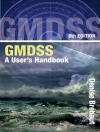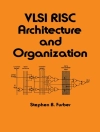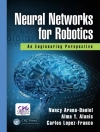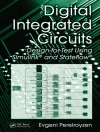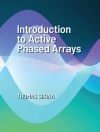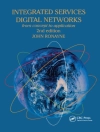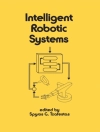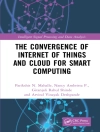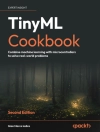Unlock the potential of cutting-edge advancements in power electronics and Io T with Power Devices and Internet of Things for Intelligent System Design, a vital resource that bridges the gap between industry and academia, inspiring innovative solutions across diverse fields such as agriculture, healthcare, and security.
This book explores the latest technological advancements in electrical circuits, particularly in the power electronics sector and Io T-based smart systems. The outcomes are closely aligned with current industrial applications, spanning from DC to higher-frequency spectrums. Research progress in electrical systems not only enhances power electronics and fault tolerance but also extends to internet-based surveillance systems designed to address emerging threats and develop mitigation strategies. Modern Io T-based system design incorporates numerous human-centered benefits, with the integration of blockchain architecture adding an interdisciplinary dimension to the research.
The primary goal of this book is to leverage Io T and power engineering technologies to develop practical solutions to contemporary challenges while exploring the diverse applications of the Internet of Things across fields such as agriculture, home security, data protection, construction, healthcare, wildlife monitoring, cryptology, and employment in the hospitality sector. Power Devices and Internet of Things for Intelligent System Design serves as a critical link between industry and academia, a role that underscores the success of this endeavor.
Tabella dei contenuti
Preface xvii
1 Comparative Analysis Between PI and Model Predictive Torque-Flux Control of VSI-Fed Three-Phase Induction Motor Under Variable Loading Conditions 1
Sujoy Bhowmik, Pritam Kumar Gayen and Arkendu Mitra
1.1 Introduction 2
1.2 Mathematical Modeling of Three-Phase Induction Motor and Voltage Source Inverter 4
1.3 Control Logics of Induction Motor Drive 7
1.4 Results and Discussions 14
1.5 Conclusion 21
1.6 Future Scope 22
2 A Survey on Congestion Control in Large Data Centers 25
Indrajit Das, Papiya Das, Papiya Debnath, Manash Chanda and Subhrapratim Nath
2.1 Introduction 26
2.2 Key Issues in Data Center Networks 29
2.3 Review of Undertaken Research 34
2.4 Comparative Analysis 84
2.5 Conclusion 84
3 Secure Information Transfer Using Blockchain Architecture 87
Suryapratim Ray, Aditya Bhattacharya, Preetam Ghosh, Rajat Biswas and Arpan Deyasi
3.1 Introduction 87
3.2 Fundamentals of Blockchain Technology 88
3.3 Proof of Work (Po W) 90
3.4 System Architecture 91
3.5 Data Chain Implementation 92
3.6 Conclusion and Future Work 96
4 Cyber Literacy, Awareness, and Safety of Senior Citizens: A Comprehensive Case Study of the Contemporary Landscape 99
Preetam Bhattacharya, Sayak Karar, Suranjan Saha and Debraj Chatterjee
4.1 Introduction 100
4.2 Background 101
4.3 Cyber Literacy and Awareness Among Senior Citizens 104
4.4 Common Cyber Attacks Faced by Senior Citizens 107
4.5 Safe Cyber Practices for Senior Citizens 126
4.6 Conclusion 128
5 Smart Io T-Based Kit for Agriculture with Sensor-Incorporated Systems: A Review 133
Caprio Mistry and Arighna Basak
5.1 Introduction 134
5.2 Research Background 135
5.3 Detailed Description of the Project 136
5.4 Literature Review 138
5.5 Hardware Requirement 139
5.6 Discussion 142
5.7 Conclusion 143
6 Music Generation Using Deep Learning 147
Sneha Roy Chowdhury, Samridha Biswas, Shuvayan Nandy, Suman Kumar Maity and Debraj Chatterjee
6.1 Introduction 147
6.2 Literature Survey 149
6.3 Proposed Methodology 158
6.4 Results and Discussion 161
6.5 Conclusion and Future Scope 163
7 Design of Cost-Efficient LPG Gas Sensing Prototype Module Embedded with Accident Prevention Feature 167
Rajarshi Dhar, Shreemoyee Bhattacharyya, Pampa Debnath and Arpan Deyasi
7.1 Introduction 167
8 Various Versions of Power Converter Topologies in a Common Platform 177
Tapas Halder
8.1 Introduction 177
8.2 Derivation of the Flyback Converter From the Buck-Boost Converter 179
8.3 Power Circuit Operation of the Buck-Boost Converter 179
8.4 Design of the Power Inductor of the Converter 185
8.5 Impact of the Ripple Voltage Across the Output Capacitor 188
8.6 Derivation of the Flyback Converter from the Buck-Boost Converter 189
8.7 Derivation of the Buck Converter 189
8.8 Derivation of the Boost Converter from the Buck-Boost Converter 192
8.9 Derivation of the CUK Converter Topology 194
8.10 Derivation of the SEPIC Topology 197
8.11 Derivation of the Zeta Converter Topology 200
8.12 Results 202
8.13 Conclusions 202
9 Comparative Analysis of Two-Inductor Boost with Conventional Boost Converter for Brushless DC Motor Drive 205
Saha Sunam, Chattopadhyay Madhurima, Chowdhury Debjyoti and Mukherjee Moumita
9.1 Introduction 205
9.2 Brushless DC Motor Drive 207
9.3 Converter Design and Operation 209
9.4 Design Parameters of the Modified Boost Converter 211
9.5 Proposed Scheme of BLDC Drive 213
9.6 Results and Discussions 214
9.7 Conclusion 222
10 A Survey on NSF Future Internet Architecture (FIA) for Mobility First (MF), Named Data Networking (NDN), NEBULA, and e Xpressive Internet Architecture (XIA) 225
Indrajit Das, Papiya Das, Papiya Debnath, Manash Chanda and Subhrapratim Nath
10.1 Introduction 227
10.2 Mobility First 229
10.3 Named Data Networking 238
10.4 Nebula 250
10.5 e Xpressive Internet Architecture (XIA) 258
10.6 Security and Privacy Analysis of NSF FIA Systems 266
10.7 Conclusion 267
11 Detection and Elimination of Single and Multiple Missing Gate Fault (SMGF/MMGF) of Reversible Arithmetic Circuits 271
Arindam Banerjee
11.1 Introduction 272
11.2 Basic Concept of ATPG and Missing Gate Fault of Reversible Circuits 272
11.3 Generation of a Test Pattern for Fault Detection and Elimination Model of Reversible Gates 273
11.4 Test Pattern Generation and Fault Elimination of Half and Full Adder 278
11.5 Test Pattern Generation and Fault Elimination of Half and Full Subtractor 280
11.6 Test Pattern Generation and Fault Elimination of Half and Full Adder-Subtractor 284
11.7 Circuit Parameter Calculation 290
11.8 Computational Delay Analysis 298
11.9 Result Analysis 298
11.10 Conclusion 300
11.11 Future Scope of the Research 300
12 Development of Efficient Algorithm for Detection and Tracking of Infected Chicken at an Early Stage of Bird Flu with a Suitable Surveillance System Using RFID Technology 303
Sananda Pal, Anibrata Ghosh and Subir Kumar Sarkar
12.1 Introduction 304
12.2 Recent Trends 306
12.3 Methodology 307
12.4 Results and Discussions 318
12.5 Conclusions 323
13 Selection of DC-DC Converter for P&O MPPT Application and Its Analysis 327
Arkendu Mitra, Sujoy Bhowmik, Subhra Mukherjee, Pallav Dutta, Kamalika Banerjee and Sudhangshu Sarkar
13.1 Introduction 328
13.2 Characteristics of a Solar Photovoltaic (PV) Cell 329
13.3 Maximum Power Point Tracking 331
13.4 Proposed P&O MPPT Scheme 331
13.5 Selection of DC-DC Converter 333
13.6 Selection of a Buck-Boost Converter 336
13.7 Modeling and Simulation of PV Cell 340
13.8 Simulink Validation 341
13.9 Implementation of Hardware 343
13.10 Results and Discussion 348
13.11 Conclusion 350
13.12 Future Scope 351
14 EC-Assisted Io T: Threats and Solutions 355
Debosmita Chaudhuri and Jayanta Aich
14.1 Introduction 356
14.2 Elements of Edge Computing 358
14.3 Basic Architecture of Edge Computing 360
14.4 Edge Computing Applications 363
14.5 Security and Privacy 367
14.6 Security and Privacy Threats 368
14.7 Security and Privacy Countermeasures 371
14.8 Direction for Further Research 375
14.9 Conclusion 376
15 Implementation of Semi-Autonomous UAV for Remote Surveillance and Emergency Reconnaissance Using Convolutional Neural Network Model 379
Suryapratim Ray, Simantini Ghosh, Aditya Bhattacharjee, Rajat Biswas, Preetam Ghosh and Arpan Deyasi
15.1 Introduction 380
15.2 System Requirements 381
15.3 System Implementation 381
15.4 Algorithm and Workflow 384
15.5 Implementation and Result 384
15.6 Conclusion 388
16 Performance Improvement of Closed-Loop Sepic by ZVS and Its Protection 391
Sujoy Bhowmik, Arkendu Mitra, Sudhangshu Sarkar, Subhra Mukherjee, Kamalika Banerjee and Pallav Dutta
16.1 Introduction 392
16.2 Working Principle of Sepic 393
16.3 Sizing of Inductor and Capacitor 399
16.4 Transfer Function Modeling of Sepic 400
16.5 Designing a Closed-Loop Controller 402
16.6 Minimization of Losses by Soft Switching 404
16.7 Protection Schemes for Sepic 404
16.8 Simulation Results 405
16.9 Conclusion 418
16.10 Future Scope 418
References 418
About the Editors 421
Index 423
Circa l’autore
Angsuman Sarkar, Ph D, is a professor and the Head of Electronics and Communication Engineering at Kalyani Government Engineering College, West Bengal. He has authored six books, 23 book chapters, 97 papers in international refereed journals, and 57 research papers in national and international conferences. He is a member of the board of editors of various journals and serves as a reviewer for various international journals. He has delivered invited expert talks and tutorial speeches at various international conferences and technical programs.
Arpan Deyasi, Ph D, is an associate professor in the Department of Electronics and Communication Engineering at the RCC Institute of Information Technology, Kolkata, India with more than 18 years of professional experience in academia and industry. He has published over 200 peer-reviewed research papers and edited eight books, three of which are in press. He has completed two funded projects and has two that are currently ongoing. He has also served as a technical consultant for various industrial projects.


